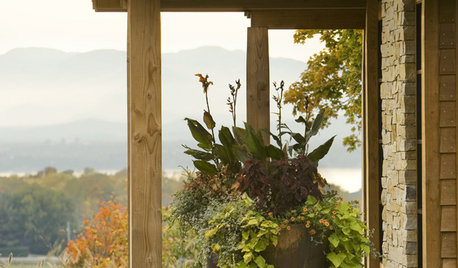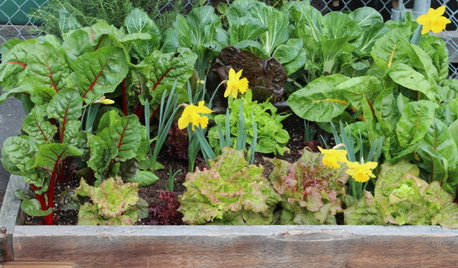Chestnuts growing in my kitchen pots, now I wonder what they are
stlgal
9 years ago
Related Stories

GARDENING GUIDESGrow a Beautiful Fall Garden in a Pot
Welcome autumn with 7 gorgeous plants that thrive in containers and enliven your porch or patio throughout the cooler season
Full Story
SPRING GARDENINGHow to Grow a Rose Garden in Pots
Everything can come up roses, even without a plot of soil in sight. This step-by-step guide to growing roses in containers shows you how
Full Story
GARDENING GUIDESHerb Garden Essentials: Grow Your Own Delicious Mint
Pull out a pot for this one. Mint's spreading habit and hard-to-kill nature can be a blessing — if you're properly prepared
Full Story
FARM YOUR YARDHow to Grow Vegetables in Containers
Get glorious vegetables and fruits on your patio with a pro’s guidance — including his personal recipe for potting mix
Full Story
SUMMER GARDENINGHow to Grow Basil
Bright color, quick growth and endless uses for cooking make this summer annual a winner in the garden or a pot
Full Story
FARM YOUR YARD10 Easy Edibles to Grow in Containers
These herbs, vegetables and fruits are just as happy in a pot as they are in the ground
Full Story
KITCHEN DESIGNWonderful Wood Countertops for Kitchen and Bath
Yes, you can enjoy beautifully warm wood counters near water sans worry (almost), with the right type of wood and sealer
Full Story
KITCHEN DESIGNKitchen of the Week: Chestnut and an Open Fire in Connecticut
Antique chestnut boards give a kitchen with a wood-burning oven vintage flair, balancing its modern amenities
Full Story
FARM YOUR YARDGrow a Kitchen Garden in 16 Square Feet
Got a sunny 4-by-4 space? You can make meals more interesting with your own vegetables and herbs
Full Story
More Discussions









lucky_p
stlgalOriginal Author
Related Professionals
70037 Landscape Architects & Landscape Designers · Bellflower Landscape Architects & Landscape Designers · Graham Landscape Architects & Landscape Designers · Ilchester Landscape Architects & Landscape Designers · Cerritos Landscape Contractors · Crystal Landscape Contractors · Midland Landscape Contractors · Ronkonkoma Landscape Contractors · St. Louis Landscape Contractors · Oxon Hill Landscape Contractors · Lincoln Siding & Exteriors · Marlton Siding & Exteriors · Elkridge Decks, Patios & Outdoor Enclosures · Castle Rock Decks, Patios & Outdoor Enclosures · Hot Springs Village Decks, Patios & Outdoor Enclosureslucky_p
corkball
stlgalOriginal Author
corkball
stlgalOriginal Author
mrcaballus
stlgalOriginal Author
mrcaballus
stlgalOriginal Author